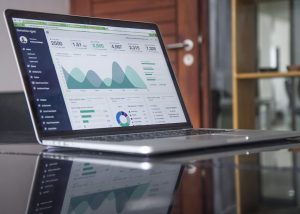Forex analysis is the process of analyzing the foreign exchange market to identify potential trading opportunities. Forex analysis is a crucial aspect of forex trading as it helps traders make informed decisions on when to buy or sell currencies. There are two main types of forex analysis: fundamental analysis and technical analysis. In this article, we will discuss how to do forex analysis.
1. Fundamental Analysis
Fundamental analysis involves analyzing the economic, social, and political factors that influence the foreign exchange market. These factors include interest rates, inflation, political stability, economic growth, and trade balance. The fundamental analysis is used to determine the long-term trends in the market.
To conduct fundamental analysis, traders need to keep an eye on economic indicators and news releases. Economic indicators such as Gross Domestic Product (GDP), Consumer Price Index (CPI), and Employment Data are released on a regular basis and can provide traders with valuable information on the state of the economy.
For example, if the GDP data shows that the economy is growing, it could indicate that the currency will strengthen against other currencies. Similarly, if the CPI data shows that inflation is rising, it could indicate that the central bank will raise interest rates to combat inflation. As a result, the currency could appreciate.
2. Technical Analysis
Technical analysis involves analyzing the price charts and using technical indicators to identify trading opportunities. Technical analysis is used to determine the short-term trends in the market.
To conduct technical analysis, traders need to use charts and technical indicators. Charts are used to plot the price movements of a currency pair over time. Technical indicators are mathematical calculations that are based on the price and/or volume of a currency pair.
There are many technical indicators available, but some of the most commonly used ones include Moving Averages, Relative Strength Index (RSI), and Bollinger Bands. Moving Averages are used to smooth out the price movements and identify the trend. RSI is used to identify overbought and oversold conditions in the market. Bollinger Bands are used to identify the volatility of the market.
Traders can use technical analysis to identify support and resistance levels. Support levels are price levels where the currency pair has historically found support and bounced higher. Resistance levels are price levels where the currency pair has historically found resistance and bounced lower. Traders can use these levels to determine when to enter and exit trades.
3. Combining Fundamental and Technical Analysis
To get a better understanding of the market, traders can use both fundamental and technical analysis. By combining the two, traders can make more informed decisions on when to enter and exit trades.
For example, if the fundamental analysis shows that the economy is growing, and the technical analysis shows that the currency pair is in an uptrend, it could indicate that the currency pair will continue to appreciate. As a result, the trader could enter a long position.
Similarly, if the fundamental analysis shows that inflation is rising, and the technical analysis shows that the currency pair is in a downtrend, it could indicate that the currency pair will continue to depreciate. As a result, the trader could enter a short position.
Conclusion
Forex analysis is a crucial aspect of forex trading. Traders need to use both fundamental and technical analysis to make informed decisions on when to enter and exit trades. By analyzing the economic, social, and political factors that influence the foreign exchange market and using technical indicators to identify trading opportunities, traders can increase their chances of success in the forex market.





